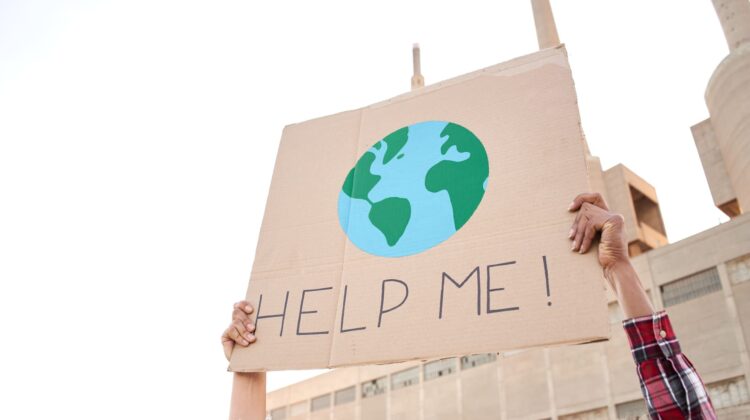
Reporting Guide to Holding Governments Accountable for Climate Change Pledges — Introduction
Is your government living up to its promises to fight global warming? This guide is divided into six sections, from tracking pledges to finding and evaluating the data.
The global fight against climate change depends on the actions of individual nations. So national accountability is critical. Each government’s plans and policies for achieving its commitments need to go under the microscope. This GIJN guide will tell you:
- Where to learn about your government’s plans to cut emissions.
- Where to find out about your country’s greenhouse gas emissions.
- How to examine what financial aid your country may need because of climate change.
- Where to find what financial commitments are being made by developed countries to help countries impacted by climate change.
Gathering these basic facts will provide a vital starting point for many investigations.
This guide is divided into six sections, from tracking pledges to finding and evaluating the data.
In a hurry? Check out our shortcut guide, based on the same research and reporting.
A list of definitions of frequently used terms and acronyms from the guide, as well as alternative resources spelling out common phrases, projects, and organizations related to studying national emissions commitments.
Where to Start
A good starting point for investigating country commitments to addressing climate change is to explore the documents filed by countries under the United Nations Framework Convention on Climate Change (UNFCCC).
Since the treaty was signed in 1996, the 198 “parties” to the convention have agreed to further commitments at annual meetings called the Conference of the Parties (COP). The 28th COP meeting (COP28) is scheduled to be held in late November and early December 2023 in Dubai, United Arab Emirates. The headquarters of the “UN F Triple C” — known as the secretariat — is in Bonn, Germany.
The filings made by the parties to the convention describe their country’s commitments to reduce emissions and reveal what their emissions have been. There are many potential stories to be found based on what is included in these documents, and what is left out.
Although governments declare how much they intend to reduce emissions, their policy prescriptions often lack specificity. Whether the goals are ambitious enough is one topic to explore. Another is to assess whether these plans are sufficient to fulfill the stated goals? In addition, reporters can examine whether the promises are being fulfilled. This last avenue requires a closer look under the hood, to investigate the policy options, probe implementation details, and evaluate the outcomes. “In some cases where there are stories… media houses just take what governments say at face value, and without investigating what the government is not sharing publicly.” — Deborah Ramalope, head of the climate policy analysis team at Climate Analytics
Because government commitments are political choices, investigation is also warranted into who makes the decisions and who influences the policy selections.
Ultimately, emissions data can provide some concrete answers. Are the goals being met? What are the trends? Is progress being made? Since data plays such a key role, another investigative path involves understanding whether the right things are being measured and whether the data itself is accurate.
For all these reasons, the various reports submitted to the UNFCCC can be important launching pads for an investigation.
Encouraging Suggestions About a Hard Topic
There are definitely impediments to holding governments accountable on climate change, an assignment on which the media’s record is mixed at best, according to journalists and observers consulted by GIJN. But they also offered advice on how to make the challenge easier.
“I think there is good coverage in some countries, but very few in others,” said Deborah Ramalope, who heads the climate policy analysis team at Climate Analytics, an NGO that among other things analyzes government pledges in its Climate Action Tracker. “In some cases where there are stories,” Ramalope continued, “they don’t necessarily get to holding governments accountable, where media houses just take what governments say at face value, and without investigating what the government is not sharing publicly.”
Ron Israel, a co-founder of Climate Scorecard and now Executive Director of The Global Citizens’ Initiative, said accountability reporting is inhibited by a variety of factors. These include “the absence of consistent reliable comparable data” and a lack of focus about who is responsible for national emissions policies. In addition, he observed, “Leaders in many countries don’t want to be held accountable because they face the conflict between dealing with global warming and dealing with the day to day survival needs of their citizens.”
One of the few examples of accountability reporting on this topic was a 2021 Washington Post investigation, which found national climate pledges were often built on flawed data. “An examination of 196 country reports reveals a giant gap between what nations declare their emissions to be vs. the greenhouse gases they are sending into the atmosphere,” the Post found. “The gap ranges from at least 8.5 billion to as high as 13.3 billion tons a year of underreported emissions — big enough to move the needle on how much the Earth will warm.”
Journalists and activists who have thought about government accountability reporting contributed the encouragements digested below.
Break down the task: Government commitments are about policies, not just targets. The commitments have many parts. So pick just one element. For example, look at the progress on reducing emissions from one industry or sector. Or examine one specific government strategy, such as development of renewable energy technologies to produce electricity. Report on laws and regulations, whether they are being enforced, and if they are being effective.
Don’t be afraid of the subject: At first blush, the science involved may be hard to understand, but it’s less complicated than it may appear and there are lots of resources available. “It’s jargon, but it’s not that jargony,” commented Akshat Rathi, a senior reporter for Bloomberg Green.
There’s probably conflict to uncover: Competing interests are involved in the creation of climate targets and strategies. Examine who is influencing climate change policy.
Policies matter: “Commitments are about policy implementation, not just targets: Sure, the final test of a commitment is whether emissions are reduced, but getting there requires action to change policies,” said Leo Hickman, the editor and director of Carbon Brief. “Report on laws and regulations, whether they are being enforced, and if they are being effective,” he advised. For an example of how Carbon Brief does its detailed devaluations, see this piece about the United Kingdom.
Many standard investigative tools will be useful: Hear from Scilla Alecci, the reporter who led and coordinated Deforestation, a project by the International Consortium of Investigative Journalists that involved 140 reporters from 27 countries. “I’d suggest journalists who want to hold their governments to account look into lobbying strategies and other ways companies influence governments’ policies.” She advised requesting public records, identifying loopholes in laws, and using trade records to identify companies that take advantage of weaknesses in the system.
Fact-checking is core journalism, not activism: Checking commitments with facts, such as about actual emission levels, isn’t “activism” on climate change, it tests public promises.
Presentation can be powerful: This is an area that offers an opportunity to do good graphic presentations, such as scorecards.
Focus on the Biggest Emitters
For reporters in developing countries, reporting is needed on how much loss and damage will likely occur due to climate change impacts.
It is of particular importance to evaluate national efforts of countries whose greenhouse gas emissions (GHGs) have a disproportionate effect on global warming. “About 60% of GHG emissions come from just 10 countries, while the 100 least-emitting contributed less than 3%,” summarized the Climate Watch. (The top 10 are: China, India, Indonesia, Russia, Brazil, Japan, Iran, Canada, Saudi Arabia, and the US.)
Whether the large developed countries will, as promised, compensate developing countries for the “loss and damage” caused by climate change is one of the most controversial climate change topics.
For reporters in developing countries, reporting is needed on how much loss and damage will likely occur due to climate change impacts and whether these are being measured adequately enough to make credible compensation claims.
There’s no shortage of accountability angles to pursue.
Worldwide Reports Provide Context
The macro story — about how the collective world effort is going — can also provide key context for national stories.
Many official bodies and nongovernmental organizations (NGOs) with large staffs and technical analytical capacity write about the big picture fight against climate change. These reports sometimes include insights about specific countries. (We’ll get to country-specific evaluations later.)
One key report is prepared by the UNFCCC, which synthesizes all the national commitments, known as Nationally Determined Contributions or NDCs. See the October 2022 synthesis report.
The UNFCCC evaluates what the impact would be if all the NDCs were implemented. The October 2022 synthesis report said “a sizable increase” in global GHG emissions in 2030 compared to 2010 is anticipated.
Here’s a sampling of other recent major climate change reports:
- A State of NDCs report by the NGO Climate Watch concludes that “countries must do much better at connecting their NDCs to delivering concrete action on the ground.”
- State of Climate Action 2022, a report by multiple organizations, makes global projections.
- The Climate Transparency Report 2022 (see video below) from the NGO Climate Transparency provides an overview of the commitments from the G-20 countries.
- Adaptation Gap Report 2022 from the UN Environment Programme (UNEP) looks at the planning, financing, and implementation of adaptation actions. “International adaptation finance flows to developing countries are five to 10 times below estimated needs and the gap is widening,” the report says.
- The Emissions Gap Report 2021 from UNEP states: “Current NDCs cover only about one third of the methane reduction required to be consistent with a 2°C temperature goal, and only about 23 percent of what is needed for the 1.5°C goal.”
- A 2022 analysis by the World Resources Institute says G-20 nations “have so far failed to make new enhanced emission reduction pledges to keep the world on track to meeting the UN’s 1.5°C global warming target this year.”
The Net Zero Stocktake 2022 report by the site Net Zero Tracker “shows that target-setting momentum continues and measures of quality are improving, but also that an alarming lack of credibility pervades the entire landscape.”

Toby McIntosh is a senior advisor for GIJN’s Resource Center, which provides online resources to journalists worldwide. He was the editor of FreedomInfo.org, (2010-2017) a nonprofit website based in Washington, D.C. that covers international transparency laws. He was with Bloomberg BNA for 39 years and has filed numerous US Freedom of Information requests and has written about FOI policies worldwide. He is a steering committee member of FOIANet, a network of FOI advocates.
This article first appeared on Global Investigative Journalism Network and is republished here under a Creative Commons license.
